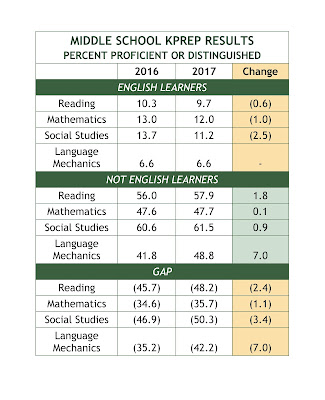Yesterday’s post discussed changes in district revenue per pupil from 2008 to 2016, looking at local, state, and federal funding, including the district on-behalf payments. It left out the Other Revenue listed in Revenue and Expenditure Reports. This post explains why that Other Revenue may not show school districts’ gaining any financial ground.
KDE's Chart of Accounts Quick Reference Guide shows that:
- Bond Issuance is a big part of Other Revenue. When a district sells bonds, the buyer expects the purchase price back with interest. It’s quite a lot like taking out a mortgage: you get dollars now, but you also get a matching obligation to pay back all those dollars, and more, within a matter of years.
- Sale or Compensation for Loss of Fixed Assets is another major part of Other Revenue. In a sale, the district gives up something (a bus, a copier, an obsolete building) for the dollars it receives. When a district is compensated for a loss of that kind of asset, that again means something has been given up. In either case, the district might gain, lose, or break even, but to tell, we’d have to compare the dollars received to the value of the items—and the Revenue and Expenditure reports don’t tell us the item’s value.
- Other Revenue also includes some additional categories without a major heading, including loan proceeds, capital lease proceeds, other items, capital contributions, amortization of premium, special items and extraordinary items. Loans sure sound like they need repayment, and capital leases sure sound like the district has to let the renter use some district buildings or equipment. There’s room for more research on these, but the terms themselves show that the amount paid in may not really add to the district’s bottom line revenue.
In short, the common factor in Other Revenue seems to be that the district gives up something to get something else, and the problem is that we can’t tell if the end result is a gain or a loss.
So, in the chart below:
- Yes, Other Revenue was reported as higher by $640 after adjusting for inflation, and
- Yes, Total Revenue including that Other Revenue was higher by $446 after adjusting for inflation, but
- No, that does not tell us that districts had $440 more to spend on serving students

Source Notes: The sources for this post are the same as for yesterday's revenue post.






























